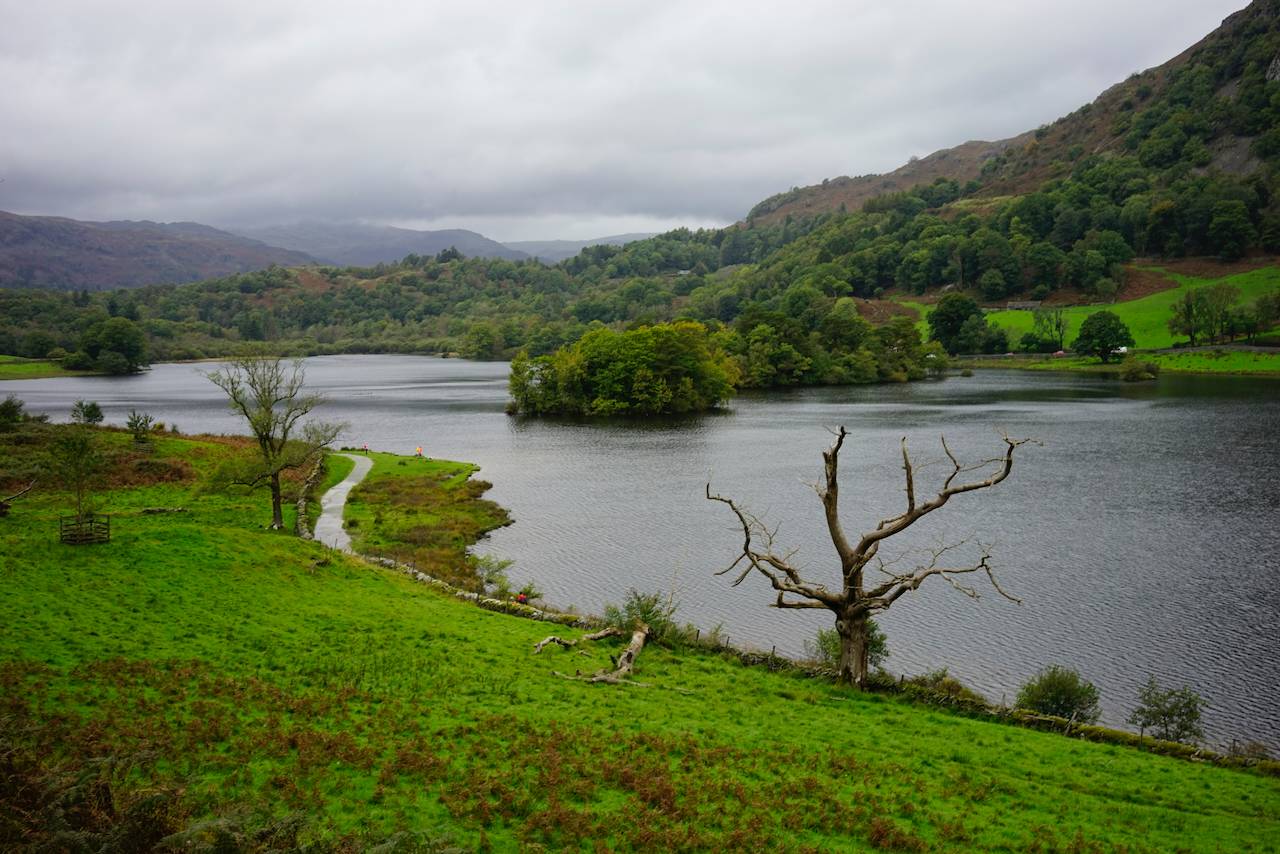Working in North West England, I’ve always heard my colleagues talking about how beautiful the Lake District is. Though as I learned from my mum, I’ve been there when I was a kid, I’ve had everything forgotten (and told my colleagues that I have never been there). It seems to be a good idea to spend a week exploring the Lake District with my family, revisit places we have been to, and explore some new places together.
Special thanks to my wife, CC, who’ve crawled dozens of web pages and tidied up the information into a comprehensive spreadsheet so I could improvise on the way; also my colleague Laura who gave me a list of places that her family liked for me to consider.
Aira Force and Ullswater
Parking: Aira Force Carpark CA11 0JS
Website: National Trust

Aira Force and Gowbarrow Park are owned by the National Trust, in other words, there is a well-managed car park. As we went to Aira Force only after we found that we could not go to Buttermere because of road works, we arrived late as the car park had already been full. Luckily, we saw some people returning to their cars only after waiting a short while.
After parking our car in the Aira Force National Trust car park, we started following the Aira Force & Gowbarrow Trail, which according to the website, should be a 4.5 mile (7.2 km) walk which takes about 1.5 – 3 hours. When we reached checkpoint 2, we were attracted by the view of the other side of the Glade, so we turned right, and took the path which showed us Lyulph’s Tower and enjoyed the view of Ullswater.

It took us around 45 minutes to reach the middle of the Glade and the Memorial Seat (Checkpoints 6 and 7 stated in the map above), and we found it quite impossible to complete the entire Gowbarrow trail before sunset, so we headed back and followed the Aira Force Woodland Walkway, a wide and well-paved walkway partly funded by the EU, and visited Aira Force. Walking along the path, we could listen to the thunderous sound of the waterfalls. Coming out from the woods, standing on the Falls View Bridge, we could see water gushing out from the top, forming 2 rainbows in front of us. Absolutely stunning.

Rydal Water and Rydal Cave
Parking: St Mary’s Church (Cumbria, Rydal, Ambleside LA22 9LR)
As roadwork blocked the traffic to Buttermere by the time we visited, we decided to stroll around Rydal Water, one of the smallest lakes in the area. After parking our car outside St Mary’s Church by paying a small donation, we walked uphill and strolled around Rydal Water through the Coffin Route. The name might sound scary, but it was traditionally used as a route to carry the dead from Rydal and Ambleside to Grasmere. The road was quite a pleasant walk and on the day we visited, we saw groups of elderly following the same route as well.

After passing Brockstone Grasmere Holiday Cottage, we walked downhill to reach the White Moss Car Park, crossed the road to the other side of A591, and continued our journey to Rydal Cave. The cave was an old slate quarry known as Loughrigg Quarry, supplying roofing slate for nearby villages. It had been abandoned and is now a tourist attraction with some stepping stones laid across the shallow water for visitors to have a closer look at it.

The walk took us about 3 hours to complete, and though the terrain was rough, it was not too difficult to complete and was quite suitable for the whole family to spend a few hours there. The walk to Rydal Cave could be tiring, but it could be avoided by following the route around the lake to complete this circular route.
When we were back at St Mary’s Church, I spotted a robin standing in the mossy garden and I was so lucky that I could take such a detailed picture with my phone.

Wray Castle
Website: National Trust

During the Victorian era, it was trendy for the rich to build a castle as their country house, Wray Castle was one of them. In 1840, a retired Liverpool surgeon built the castle, but it was made famous as Beatrix Potter, the creator of the world-famous Peter Rabbit, spent her summer holiday there when she was 16 in 1882. The castle is now managed by National Trust and is hosting an exhibition called Brought to Light, showing photos taken by Herbert Bell, son of a local chemist, and Rupert Potter, father of Beatrix Potter. The photos show how the rich spent their time in the Lake District in the late 19th century and how subtly the area changed over time.
Afterthoughts
When I was in Hong Kong, hiking could be a weekend activity or even something ad hoc as there is no distance between mountains with good hiking routes and the city; but hiking in the Lake District is another experience, it’s a small adventure includes driving through some interesting roads, planning where to go and what to do. I think I will visit the area again in the future and find some more interesting routes to explore.


Leave a Reply